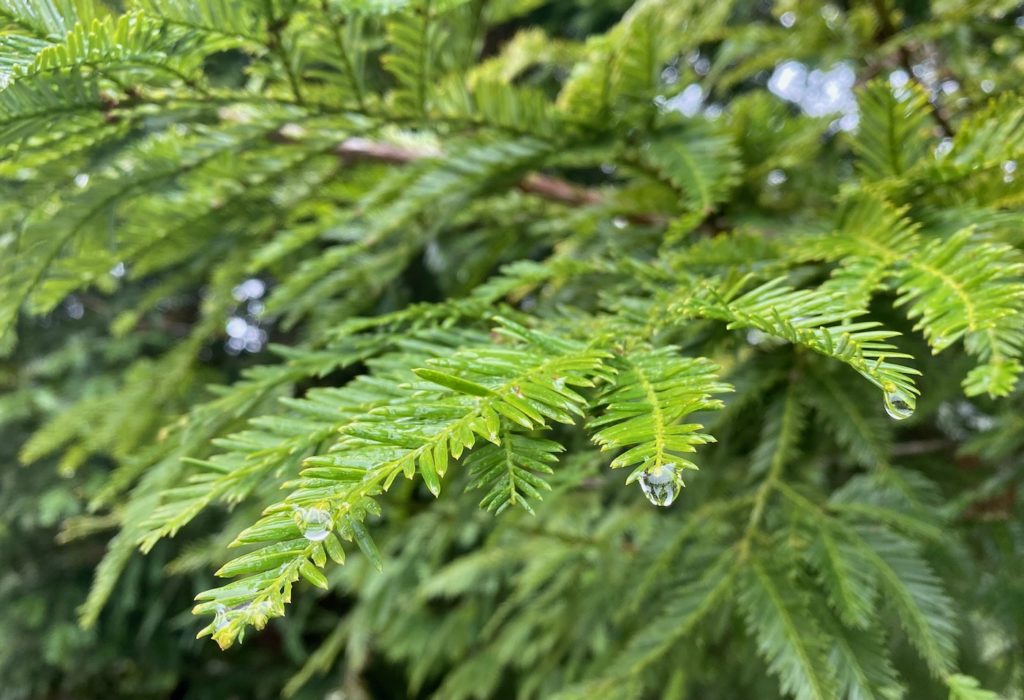Fog-harvesting coastal redwood trees
Northern California, USA. 0.46 mile (0.75 km) from coast.
Latitude 41.3˚ N.
Elevation: between 154 – 626 feet (47-191 meters)
A study in northern California found that on average 34% of the annual hydrologic input was fog-drip off coastal redwood trees (Sequoia sempervirens), while in areas without the redwood trees, fog accounted for only 17% of the water input. These data demonstrate that the trees significantly influence the volume of fog-water entering the system.1

The study also found that in summer when fog was most frequent, and rainfall was absent, about 19% of the water within the redwoods—and about 66% of the water within the understory plants growing below the redwood trees—came from fog after it had dripped from the leaves of the trees.2
Cooler still, the redwood leaves also directly absorb some of this fog before it condenses as liquid water and enters the soil.3 All this enables the trees to maintain adequate moisture when soil water is scarce and fog is abundant, as well as preventing dehydration and excessive moisture loss to transpiration during times of drought.
And in another study it was found that the redwoods also harvest nitrogen from the fog, absorbing the nutrient through their leaves.4 This increased nitrogen availability from fog through direct absorption and increased soil nitrogen from increased fogfall, together with the increased moisture harvested from the fog, allowed for greater rates of photosynthesis during the drought period.
REFERENCES:
1. “Fog in the California Redwood Forest: Ecosystem Inputs and Use by Plants,” by T.E. Dawson, Oceologia, 1998. http://link.springer.com/article/10.1007%2Fs004420050683#page-2, accessed 7-21-2014.
2. “Fog in the California Redwood Forest: Ecosystem Inputs and Use by Plants,” by T.E. Dawson, Oceologia, 1998. http://link.springer.com/article/10.1007%2Fs004420050683#page-2, accessed 7-21-2014.
3. “The Contribution of Fog to the Water Relations of Sequoia Sempervirens (D. Don): Foliar Uptake and Prevention of Dehydration,” by Burgess, S. S. O. & Dawson, T. E. Plant, Cell & Environment, 27, 1023-1034, 2004.
4. “Fog as a source of nitrogen for redwood trees: evidence from fluxes and stable isotopes,” Pamela H. Templer, Kathleen C. Weathers, Holly A. Ewing, Todd E. Dawson, Stefania Mambelli, Amanda M. Lindsey, Jeramy Webb, Vanessa K. Boukili, Mary K. Firestone, Journal of Ecology, October 20, 2015
For more on integrated water harvesting see the following award-winning books available direct from the author at deep discount…

Volume 1

